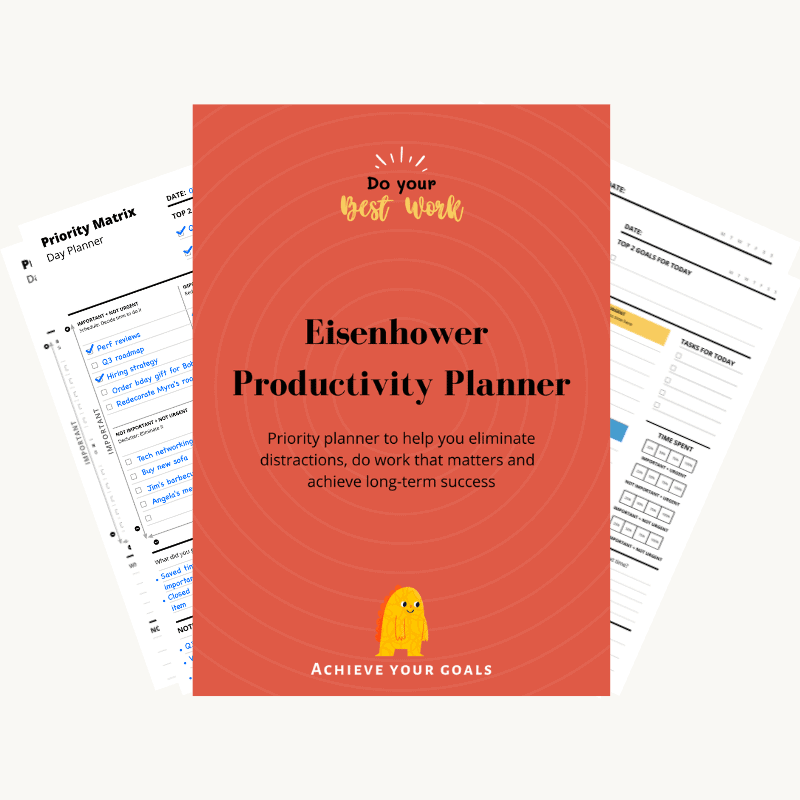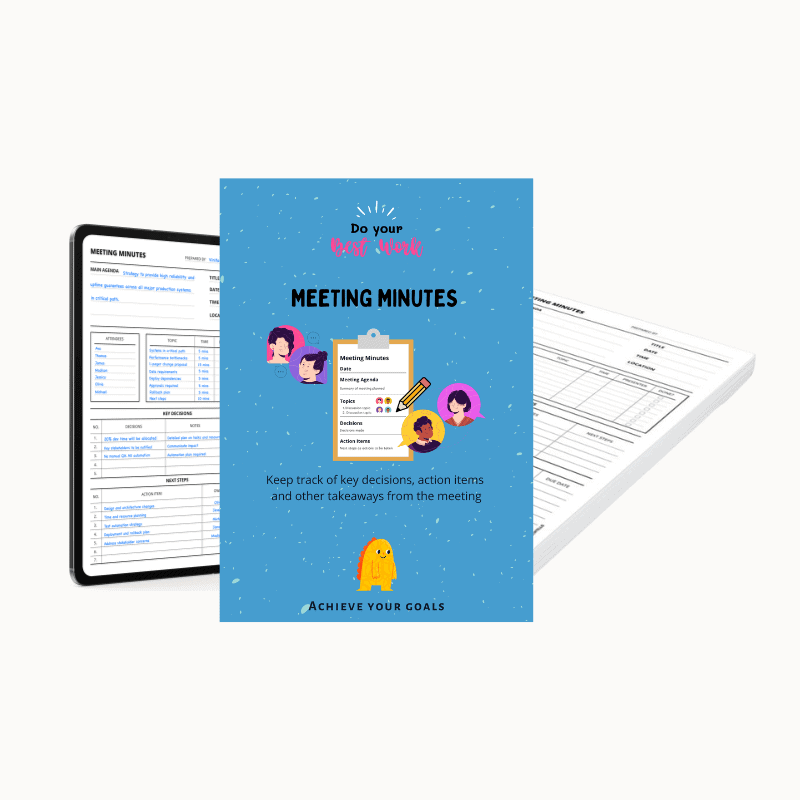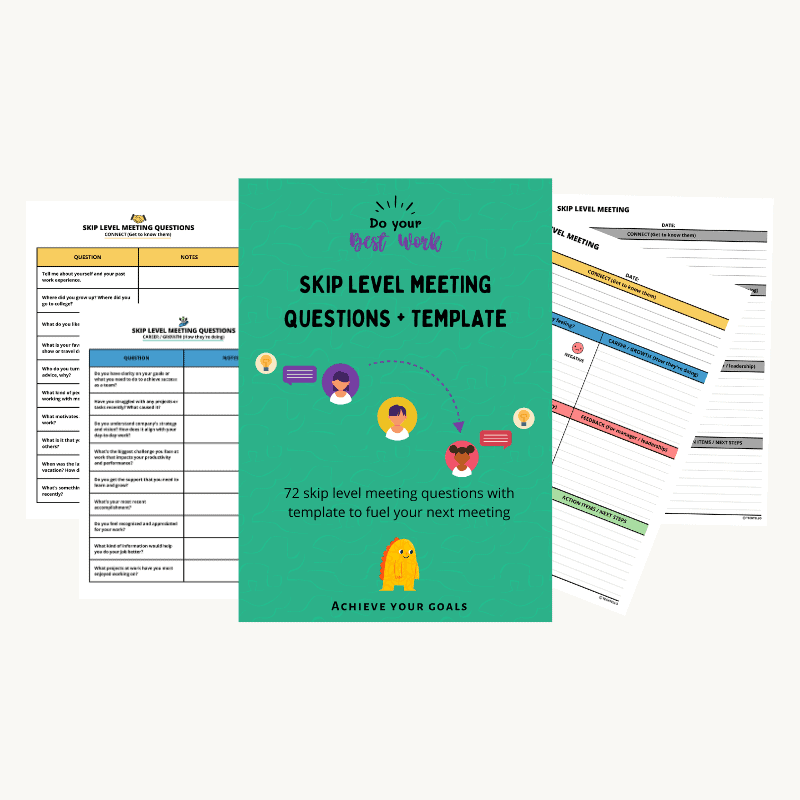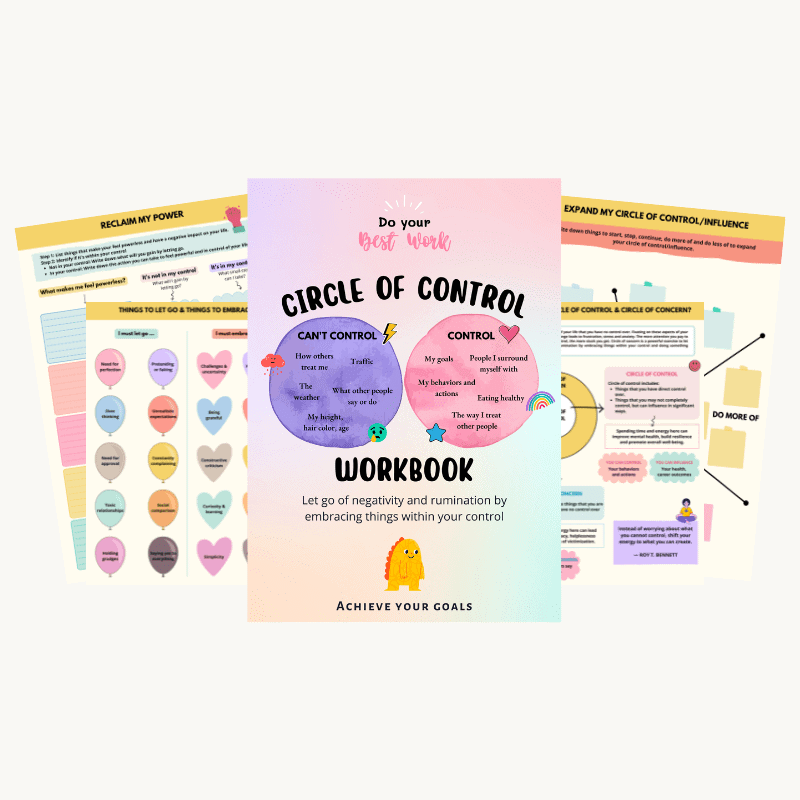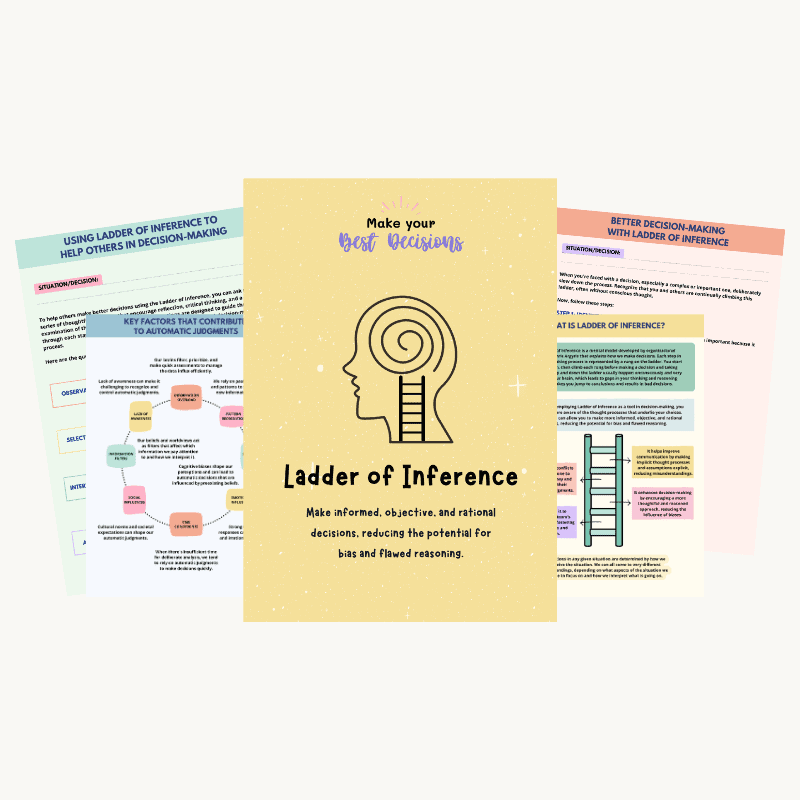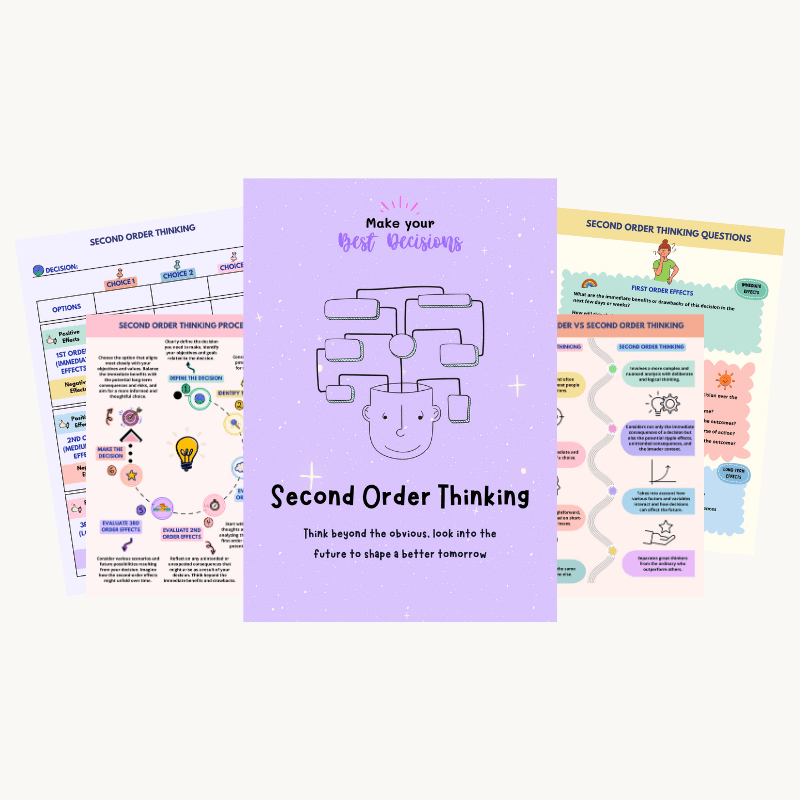9 Signs You’re Promoting Mediocrity In Your Team

Is your team’s performance going down? Is the quality of their work degrading? Have people in the team gotten into the habit of putting mediocre effort instead of targeting excellence?
Missed deadlines
Low energy levels
Maintaining the status quo
Ignoring risky opportunities
Doing just enough, not more
These aren’t random events or minor blips that you can take lightly and brush them aside with the assumption that it’s just a temporary phase. They’re warning signs that something deeper might be off.
When you first start to notice these signs of trouble in your team, it’s tempting to pin the blame on the team. Maybe they aren’t skilled enough. Maybe they have lost their spark. Maybe they just don’t care.
But pause and ask yourself: What if the issue isn’t them?
What if you’ve been setting the bar too low? What if you’ve become too accommodating, too hands off and too vague in how you communicate expectations, leaving a gap for complacency and low standards to creep in?
When you set the ceiling too low for your team, you open the door for average to become the norm and invite mediocrity to settle in. It dulls your team’s ambition and prevents them from stretching their potential, taking bold risks or striving for excellence.
When leaders tolerate mediocrity, it’s a cancer that spreads like wildfire. People stop trying, people stop caring, and people opt for what’s easy rather than what’s best.
— Frank Sonnenberg
Here are the 9 signs that you may be giving mediocrity room to stretch:
Good enough is the norm
When setting expectations on what’s acceptable, do you set a high bar for your team or do you lean towards good enough?
A rushed report.
A half-baked idea.
A project that barely meets customer’s requirements.
No one seems to mind as long as the work gets done. No one challenges it or pushes for ways to make it better. When mediocrity is met with silence, or worse approval, it becomes a standard that everyone follows, but no one questions.
Good enough may seem harmless at first and may even be practical at times. For example: When you’re facing a crisis and there’s a time crunch to move fast. You may decide to accept a “good enough” solution that resolves the crisis at the moment while putting a more long-term solution to the backlog.
But failing to question mediocre outcomes or approving the average when there’s no rush, signals that striving for more isn’t necessary. Why stretch when doing the bare minimum is not only accepted—but expected? Why push boundaries or pursue mastery when the goal is to meet deadlines and deliver work without major hiccups? Why go the extra mile when no one’s asking for it?
Common phrases people in the team might say:
What’s the fastest way to get this off our plate?
As long as we’re not failing, we’re doing fine.
Why put in more effort if this already works?
Let’s just get it done and move on.
People stop trying when there’s no benefit for being exceptional and no consequence for being mediocre.
― Frank Sonnenberg, BookSmart
“Good enough” mindset breeds complacency. It’s the silent killer of innovation and creativity. If your team treats “good enough” as the finish line, you’ve got a problem.
To stop settling for good enough:
- Spotlight excellence. Highlight and share examples of outstanding work so the team knows what “great” looks like.
- Raise the bar, visibly. Set stretch goals. Push thinking. Don’t settle for deliverables that simply meet specs—aim for impact.
- Reframe success. Make “Did we go above and beyond?” a part of every review.
- Nip the “just get it done” mindset in the bud by asking what could have been better.
“Good enough” gets things moving, but rarely leaves a mark. If your team keeps aiming for “done,” they’ll never reach “exceptional.” Build a team that challenges the norm, not settle for it.
Amazing Goal Planner
Become your best self by setting and achieving goals in all important areas of your life.
Sense of urgency or drive is missing
Do you set ambitious targets for your team or do you give flexible deadlines with no buzz, no push and no sense of urgency?
Slow responses.
Lack of follow-through.
Delayed decisions.
Indifference to outcomes.
Without a sense of drive or push to move things forward, deadlines stretch, meetings drag on and projects lose momentum. High performing teams thrive on energy, curiosity and bias for action—the desire to make progress, to figure things out, to respond with urgency is what fuels momentum. But when that drive disappears, even great ideas gather dust—decisions get delayed, accountability slips and opportunities are missed.
Team members start internalizing a passive “we’ll get to it” mindset—which is where mediocrity gains ground in the slow drift of low urgency and even lower expectations. They stop challenging themselves because they can’t see the point. Why move faster when no one’s keeping time? Why go above and beyond when “barely enough” gets the same response?
Common phrases people in the team might say:
No one’s asking, so why stress?
We’ll get to it when we can.
It’ll get done eventually.
We can always extend the deadline.
Goals without deadlines aren’t goals; they’re merely directions.
― Kerry Patterson, Crucial Conversations
To promote urgency without panic:
- Set a tempo that challenges people, not one that burns them out.
- Don’t push speed for the sake of it. Connect timelines to value—help the team see why acting fast matters.
- Highlight those who step up, move quickly and show a proactive mindset—make drive visible.
- Discuss progress regularly and show that forward motion matters.
Without urgency, momentum dies. Without momentum, mediocrity thrives. Ignite a sense of drive in your team—leave no room for mediocrity to settle in.
Underperformance goes unchecked
Do you turn a blind eye to slackers and underperformers in your team or do you let people know when their performance isn’t meeting the mark to protect the high standards your team needs to work toward?
Missed deadlines.
Repeated errors.
Low-effort contributions.
Disengaged behavior.
Letting underperformance slide sends a loud message to the team “low standards are acceptable, accountability is optional and excellence is negotiable.” When effort isn’t valued and standards aren’t enforced, it creates a ripple effect—others start lowering their effort just to match the tone around. Team members shift from striving to settling, from taking ownership to doing just enough and from being proactive to going through the motions. When mediocrity goes unchallenged, it doesn’t just affect that person’s performance—it redefines what’s “normal” for the whole team.
The energy to push for better slowly fades away as high performers and others who worked hard feel frustrated and devalued. Why work so hard when no one else has to? Why put in effort when no one notices the difference? Why bother about results when being present is enough?
Common phrases people in the team might say:
I’m tired of picking up the slack.
I don’t feel like it makes a difference anymore.
Some people never get called out, no matter what they do.
Nobody follows through, and no one seems to notice.
When it comes to standards, as a leader, it’s not what you preach, it’s what you tolerate. When setting expectations, no matter what has been said or written, if substandard performance is accepted and no one is held accountable—if there are no consequences—that poor performance becomes the new standard.
— Leif Babin, Extreme Ownership
To hold everyone to the same high bar:
- Address patterns of low performance. Don’t wait for performance reviews. Have the conversation timely when performance slips.
- Support, but not without consequences. Make it clear that improvement is non-negotiable.
- Approach feedback with the intent to coach, not criticize. Make it about growth.
- Make expectations visible and consistent with the entire team. When people know what great looks like, they’re more likely to aim for it.
Unchecked performance can quickly infect the whole team. Stop mediocrity from spreading by drawing a clear line—set high standards and hold people in the team accountable to meet them. Excellence isn’t built by chance—it’s enforced by design.
One-on-One Meeting Questions + Template
Foster open communication, build trust, and strengthen relationships by providing a safe space for sharing feedback and addressing concerns.
No push for improvement
Do you push your team to grow—with stretch goals, feedback loops and encouragement to learn and get better? Do you let your team stick to what’s safe and familiar or do you challenge them to step outside their comfort zone?
Improvement is never talked about or modeled.
Feedback is a one-off event.
Business as usual mentality prevails.
When staying the same is normalized, continuous improvement isn’t reinforced and there’s no expectation to raise the bar, growth takes a backseat. Curiosity in the team fades, people stop taking initiatives and fall into maintenance mode—dodging stretch goals, staying busy with inconsequential work and sticking to what seems easy and familiar. Innovation dries up. Energy flattens. Such an environment invites mediocrity to quietly settle in—team forgets what it means to grow, no one challenges the norm and pushing limits feels unnecessary.
Soon the team falls into a pattern of simply doing what’s asked—no more, no less. No one aims higher, no one tries and no one strives to be better because no one is asked to rise and reach for their potential. Why exceed expectations when meeting them is the goal? Why build new skills when current skills are enough to survive? Why take initiative when they don’t hold any value?
Common phrases people in the team might say:
We’ve always done it this way.
No one’s asking for more, so why bother?
I don’t think anyone really cares how we do it.
It’s not like anyone’s pushing us to learn new stuff.
Excellent firms don’t believe in excellence – only in constant improvement and constant change.
— Tom Peters, Thriving on Chaos
To promote continuous growth:
- Normalize feedback—not just when things go wrong, but as a routine part of growth.
- Set development goals alongside performance goals to keep people stretching.
- Encourage experimentation and reward learning from mistakes, not just success.
- Don’t just celebrate results—acknowledge the effort to level up.
- Model growth yourself—share what you’re working to improve so others do the same.
When improvement isn’t expected and communicated clearly, people in the team level down instead of leveling up. Progress stalls as team members wait for permission to grow. Beat mediocrity—raise the bar, push for growth.
Talk, but no traction
Are you full of words, but short on action? Is there often a disconnect between what’s said and what’s done?
Ideas are raised but not acted upon.
Feedback is asked for but ignored.
Promises are made and soon forgotten.
Lofty plans on improvements, support on ideas and new initiatives are made. But then, nothing changes—no follow-through, no execution, no update. The result? Team members learn not to expect much. They stop suggesting improvements, offering ideas or taking commitments seriously because they soon learn that all that talk was only motivational and nothing ever changes in reality.
As the gap between expectations and action widens, it breeds cynicism and mediocrity; team members stop engaging—they become passive, uncommitted and indifferent. Without clear follow-through, vague talks become the norm, busyness is used to mask lack of progress and accountability quietly disappears. In the vacuum that’s left behind inaction starts to feel normal—mediocrity finds its home and settles in like it belongs. Soon everyone stops complaining. Why bother? Why put in the effort when nothing moves forward anyway? Why keep pushing for better if leadership doesn’t mean what they say?
Common phrases people in the team might say:
Don’t get your hopes up—they rarely act on what they say.
I’ve stopped bothering with suggestions—what’s the point?
Why waste energy on ideas that won’t go anywhere?
It’s all talk, no action.
Talk is cheap if it doesn’t motivate action.
— Dan Bongino
Show action matters:
- Close the gap between intention and execution. If you say something matters, follow through—visibly and consistently.
- Set clear priorities, act on team input and show your commitment by driving real outcomes.
- Make progress visible—every small win matters.
- Keep them in the loop on the decision—even if you decide not to act on something, be transparent and put it out in the open.
When people don’t feel heard, they stop talking. And when they stop talking, the problems don’t go away—they just go underground. Build credibility with consistent follow-through—show that action matters.
Unclear goals or expectations
Are your team members certain about what they’re working toward or what’s expected of them? Do they really know what success looks like?
Fuzzy goals.
Unclear priorities.
Expectations that constantly shift.
When goals are fuzzy and expectations are implied, energy gets wasted in being busy rather than being effective. With no clear bar to reach or a target to hit, team members try to play it safe and execute what’s obvious—just enough to keep them out of trouble and fake progress. High performers feel stifled while low performers coast because there’s no standard to meet. Without a shared understanding of what great work looks like, mediocrity becomes the default benchmark. Entire team drifts towards the lower end of the scale because taking initiatives or pushing boundaries is not even in scope.
With no one knowing the end destination—or worse, each one playing out their own version—work turns chaotic—with confusion, misunderstandings and blame games. Seeking alignment feels impossible. Conversations go in circles. Priorities get misaligned. Too much time is spent in debates. Eventually, everyone gets fed up and stops asking where they’re headed and starts focusing on just surviving through the day. Collaboration breaks down as individual opinions take over—people start doing what they feel is right instead of working towards a common target. Why care when decisions seem to change on a whim? Why waste time in charting a clear path when no one knows where the road ends?
Common phrases people in the team might say:
I’m not sure what exactly we’re trying to achieve.
I don’t even know who’s responsible for what anymore.
We waste so much time trying to get on the same page.
We keep talking, but nothing’s clear.
Don’t mistake activity for achievement. To produce results, tasks must be well organized and properly executed; otherwise, it’s no different from children running around the playground—everybody is doing something, but nothing is being done; lots of activity, no achievement.
― John Wooden, Coach Wooden’s Leadership Game Plan for Success
Make clarity a non-negotiable:
- Define not just the outcomes you expect, but also the values and behaviors that matter along the way.
- Set measurable, time-bound goals, break them down into achievable steps and reinforce them through regular check-ins and feedback.
- Make it safe for people to ask for clarity and ensure alignment before execution.
When no one knows where they’re headed, no one reaches anywhere. Clarity isn’t a luxury—it’s a launchpad for excellence. Make it your team’s competitive edge.
Comfort prioritized over growth
Do you promote a culture of safety in your team or a culture of taking risks? Do you encourage doing things the way they’ve always been done or do you challenge the status quo?
Dismissing new ideas.
Sticking with familiar processes.
Showing reluctance to experiment.
Avoiding challenges with fear of failure, dismissing ideas because they seem too risky or defaulting to tried-and-tested methods over bold initiatives caps your team’s potential. They don’t learn to navigate complex problems, confront obstacles or course correct when things don’t work out as expected. Doing familiar things feels safe, but it also limits growth. In such a culture, failure becomes feared instead of embraced as part of progress. New ideas feel unwelcome. Boldness is replaced by caution. The result? People in the team don’t fail, but they don’t excel either—mediocrity is silently accepted because excellence isn’t offered as an option.
Once comfort becomes the unspoken goal, people in the team stop pushing for more. They follow routines, execute on what’s been done before and never step into the uncharted territory. Being bored, disengaged and under-challenged makes them passive—they go through motions, ticking boxes and doing the bare minimum. If no one’s asking for more, why bother giving more? If bold thinking gets ignored, why take the risk? If comfort is the reward, why choose a challenge?
Common phrases people in the team might say:
Let’s just stick to what we know.
Why complicate things?
That’s how we’ve always done it.
No need to reinvent the wheel.
The true mark of a leader is the willingness to stick with a bold course of action – an unconventional business strategy, a unique product-development roadmap, a controversial marketing campaign – even as the rest of the world wonders why you’re not marching in step with the status quo.
— Bill Taylor
Normalize discomfort as the path to development:
- Create a culture that rewards curiosity, risk-taking and continuous learning.
- Create space for experimentation and reframe failure as part of learning.
- Push your team to ask better questions, challenge assumptions and reflect on what could be done differently.
- Back your team when they try and fall short. Show them that risk isn’t recklessness—it’s the birthplace of innovation.
Great teams aren’t built by playing it safe—they’re built by learning to stumble, bouncing back and daring to go again. Choose comfort or choose growth—you can’t have both.
People are told to stay in their lane
Do you confine your team members to specific roles and tasks? Are they discouraged from taking initiative or sharing ideas outside their assigned focus areas?
This isn’t your concern!
Just do what you’re told!
Don’t get involved!
Boxing team members into fixed roles and shutting down involvement outside their scope kills initiative, curiosity and collaboration. People withdraw and hold back suggestions that could have led to a better decision or solved a long-standing problem. They stop thinking creatively and start playing small because they aren’t allowed to connect the dots that spill into other people’s domains. Mediocrity quietly sneaks in—unchallenged and unnoticed.
Strict work boundaries restrict ambition. It quietly tells people: Stick to your lane. Don’t get involved. Only care about what’s on your checklist. Teamwork is replaced with siloed thinking. Creative thinkers turn unimaginative. Fixed mindset prevails. People stop asking questions, stop offering fresh ideas and stop thinking beyond what’s expected of them. Why offer ideas when they’re not welcome? Why stretch beyond your role when you’ll just be told to stay in your lane?
Common phrases people in the team might say:
That’s their department’s problem, not mine.
I keep my head down and do my part.
I didn’t want to overstep.
No one asked for my input.
Listen to anyone with an original idea, no matter how absurd it may sound at first. If you put fences around people, you get sheep. Give people the room they need.
— William McKnight
Ditch the artificial fence that restricts creativity and excellence:
- Create a culture where curiosity is welcomed, cross-functional thinking is valued and people feel safe to step up and speak up.
- Break down the mental and organizational walls. Encourage people to contribute ideas outside their job scope.
- Involve them in diverse conversations. Invite feedback from unexpected places.
Challenging ideas outside one’s direct line of work is not insubordination, it’s the mark of a team that isn’t constrained and limited by predefined roles and expectations. Give freedom to cross boundaries, to question, to look beyond their lane—cultivate a limitless mindset.
A missing role model
Do you set the tone for excellence only in your words or also demonstrate it through action? Do you walk your own talk or do you set a different set of standards for yourself and your team?
Tells the team to embrace feedback but gets defensive when given any.
Preaches punctuality but arrives late to every meeting.
Pushes others to hit deadlines but regularly delays their own decisions.
When you don’t lead by example, show inconsistency in what you say and what you do and don’t model the behaviors you expect from your team, the team picks up the message: “Talk is cheap and that the bar only applies when convenient. Standards don’t really matter. Expectations are optional.” Slowly a sense of mediocrity creeps in—team members stop aiming high and start playing along. They nod, say the right things, but the effort behind them fades—-showing compliance through words with no demonstration in action.
When team members see their manager cutting corners, ignoring feedback or following a different set of rules, they begin to question why they should do anything differently. When excellence isn’t modeled, it can’t be expected. The culture in the team shifts from commitment to convenience, from making bold moves to staying out of trouble and from pursuing stretch goals to doing average work. Why give your best when your manager isn’t giving theirs? Why do the hard work when shortcuts are rewarded?
Common phrases people in the team might say:
Guess the rules don’t apply at the top.
They don’t practice what they preach.
They say excellence, but reward compliance.
They talk big in meetings, but never follow through.
Leaders walk their talk; in true leaders there is no gap between the theories they espouse and their practice.
— Warren Bennis
Raise your own bar, model the behaviors you expect to see in others:
- Model what excellence looks like—not just in outcomes, but in mindset, effort and behavior.
- Show up prepared. Take ownership when things go wrong. Welcome critique and act on it.
- Demonstrate the hunger to improve and your team will follow suit.
What you demonstrate in action carries more weight than what you say in words. If you expect greatness, embody it. Be the standard you want reflected in your team. Words fade as time passes by, but your actions stick.
Summary
- Mediocrity doesn’t land with a bang. It creeps in quietly, showing up in everyday communication, decisions and outcomes. Unless you pay attention, you may unintentionally encourage it.
- If “good enough” mode of execution is your team’s default, excellence will lose its place. People will stop pushing themselves or raising the bar because minimum effort is still rewarded. Great teams don’t settle—they stretch.
- If your team moves slowly, procrastinates or lacks momentum, it may signal missing pressure and drive to perform. A lack of urgency communicates that time, outcomes or opportunities don’t matter much. Without energy and drive, teams drift instead of pushing forward with intention and clarity.
- Avoiding difficult conversations or letting poor performance slide sends a loud message: accountability doesn’t matter. When weak effort has no consequences, mediocrity spreads quickly. High performers begin to wonder why they should try harder when others coast without consequence.
- If no one’s asking, “How can we do this better?” your team may be stagnating. Improvement doesn’t happen without intention. When leaders don’t challenge the status quo or inspire learning, teams stop growing. Comfort becomes the goal—not excellence or mastery.
- Plans are made, ideas are discussed, but little action follows. This gap between words and execution kills motivation and credibility. Without consistent follow-through, teams stop believing that real change will happen—and they start matching effort with what they see, not what they hear.
- When people don’t know what success looks like, they default to whatever is easiest. Vague expectations lead to scattered results. Without a clear target, performance becomes hard to measure, feedback becomes generic and mediocrity quietly becomes the standard.
- Growth requires discomfort—new challenges, feedback and risk. When leaders prioritize harmony, avoid hard conversations or overprotect their team, they trade development for comfort. This emotional cushioning breeds stagnation instead of capability.
- Discouraging collaboration, curiosity or taking initiative beyond job descriptions limits potential. When people are boxed into roles without room to explore or contribute beyond their “lane,” they disengage. Great teams thrive when ideas flow freely and everyone feels empowered to add value.
- If you’re not modeling excellence, courage or learning, your team won’t either. Leaders who avoid hard decisions, show inconsistent effort or stay silent during key moments lose moral authority. Teams need someone to look up to—not someone who preaches excellence but lives mediocrity.












